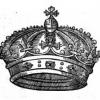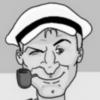-
Posts
8,149 -
Joined
-
Last visited
Reputation Activity
-
 allanyed reacted to JerseyCity Frankie in 200 sketches of Traditional Pacific Islanders rigs
allanyed reacted to JerseyCity Frankie in 200 sketches of Traditional Pacific Islanders rigs
Found this link on Reddit, looks like13 pages from a sketchbook have been reproduced. http://www.cherini.eu/etnografia/IND/index.html
the root website doesn't translate to English but if you click on the hotlinks there is treasure: http://www.cherini.eu/and I do mean TREASURE, I have not seen so much information on delightful non-Western rigs before.
-
 allanyed got a reaction from Elia in Young America 1853 by EdT - FINISHED - extreme clipper
allanyed got a reaction from Elia in Young America 1853 by EdT - FINISHED - extreme clipper
Ed,
Collectively we ran out of adjectives a long time ago, so suffice it to say, I love watching each and every post.
Allan
-
 allanyed got a reaction from GLakie in Young America 1853 by EdT - FINISHED - extreme clipper
allanyed got a reaction from GLakie in Young America 1853 by EdT - FINISHED - extreme clipper
Ed,
Collectively we ran out of adjectives a long time ago, so suffice it to say, I love watching each and every post.
Allan
-
 allanyed got a reaction from Jack12477 in Young America 1853 by EdT - FINISHED - extreme clipper
allanyed got a reaction from Jack12477 in Young America 1853 by EdT - FINISHED - extreme clipper
Ed,
Collectively we ran out of adjectives a long time ago, so suffice it to say, I love watching each and every post.
Allan
-
 allanyed got a reaction from CaptainSteve in Young America 1853 by EdT - FINISHED - extreme clipper
allanyed got a reaction from CaptainSteve in Young America 1853 by EdT - FINISHED - extreme clipper
Ed,
Collectively we ran out of adjectives a long time ago, so suffice it to say, I love watching each and every post.
Allan
-
 allanyed got a reaction from GLakie in HMS Vulture 1776 by Dan Vadas - FINISHED - 1:48 scale - 16-gun Swan-class sloop from TFFM plans
allanyed got a reaction from GLakie in HMS Vulture 1776 by Dan Vadas - FINISHED - 1:48 scale - 16-gun Swan-class sloop from TFFM plans
Well done once again Danny. I see myself referring to your log down the road as you have provided quite a few detailed "how-to" instructions including the netting technique.
Allan
-
 allanyed got a reaction from egkb in Young America 1853 by EdT - FINISHED - extreme clipper
allanyed got a reaction from egkb in Young America 1853 by EdT - FINISHED - extreme clipper
Ed,
Collectively we ran out of adjectives a long time ago, so suffice it to say, I love watching each and every post.
Allan
-
 allanyed got a reaction from foxy in Making sails for HMS Victory
allanyed got a reaction from foxy in Making sails for HMS Victory
Having just seen Blue Ensigns photos, I humbly stand corrected as he has shown it can be done.
Allan
-
 allanyed got a reaction from Remcohe in HMS Kingfisher 1770 by Remcohe - 1/48 - English 14-Gun Sloop - POF
allanyed got a reaction from Remcohe in HMS Kingfisher 1770 by Remcohe - 1/48 - English 14-Gun Sloop - POF
Remco,
I just checked in for the first time in a long time as your build came up when I was searching for brick hearth information. I have now spent some hours following your build to catch up since mid 2014. Remarkable workmanship! Thanks for sharing so many clever ideas.
Allan
-
 allanyed got a reaction from IgorSky in SHIP'S WHEEL
allanyed got a reaction from IgorSky in SHIP'S WHEEL
The above answers your question but I must comment on the drawing you posted. You are right, the quality is a bit off. How can the ends of the line wrapped around the drum both drop from the same side of the drum? Reminds me of some far out designs in Mad Magazine back in the day like the 2/3 tined fork in the attached picture.
Allan
-
 allanyed got a reaction from qwerty2008 in SHIP'S WHEEL
allanyed got a reaction from qwerty2008 in SHIP'S WHEEL
The above answers your question but I must comment on the drawing you posted. You are right, the quality is a bit off. How can the ends of the line wrapped around the drum both drop from the same side of the drum? Reminds me of some far out designs in Mad Magazine back in the day like the 2/3 tined fork in the attached picture.
Allan
-
 allanyed got a reaction from druxey in SHIP'S WHEEL
allanyed got a reaction from druxey in SHIP'S WHEEL
The above answers your question but I must comment on the drawing you posted. You are right, the quality is a bit off. How can the ends of the line wrapped around the drum both drop from the same side of the drum? Reminds me of some far out designs in Mad Magazine back in the day like the 2/3 tined fork in the attached picture.
Allan
-
 allanyed got a reaction from Jack12477 in Another rookie question - Can I Clean Up the Keel With A Dremel
allanyed got a reaction from Jack12477 in Another rookie question - Can I Clean Up the Keel With A Dremel
I agree with the above. Rotary tools have their place, but this probably is not the place. You can shave a thousand of an inch with a chisel. I defy anyone to do that with any consistency with a rotary drum.
Allan
-
 allanyed got a reaction from mtaylor in Another rookie question - Can I Clean Up the Keel With A Dremel
allanyed got a reaction from mtaylor in Another rookie question - Can I Clean Up the Keel With A Dremel
I agree with the above. Rotary tools have their place, but this probably is not the place. You can shave a thousand of an inch with a chisel. I defy anyone to do that with any consistency with a rotary drum.
Allan
-
 allanyed reacted to JerseyCity Frankie in Pin Rails
allanyed reacted to JerseyCity Frankie in Pin Rails
My two or three cents about pins and pinrails: Use the smallest possible pin you can find or make, this will prevent a cascading series of scale issues from developing later. Obviously the smaller the pins, the more can be fit on a rail. Every pinrail I have seen has the pins spaced evenly about 10" apart. Any closer together and the belayed lines passed around the pins would interfere with each other and the sailors couldn't get their hands in there.
Most of the pins I see on models are too big and have en exaggerated shape and if scaled up would look like three foot high wooden lightbulbs. Most actual pins are two inches wide at most and are seldom longer than 18". They do flare out on their upper halves, but only a bit and a human hand can still grasp them- the commercially available ones all too often flare out into nearly spherical globes. Also consider that once there is a line on the pin, the pin itself is no longer visible except maybe its very top. For this reason I mostly just use wire or rod.
An issue that always arises is the apparent low number of pins, modelers often find their accurate plans do not provide enough places for all the lines to belay to. This is a very common problem.
As mentioned above, another very common problem is not fixing your pinrail strongly enough. There isn't very much tension on them but the pinrails on models do very often pull out or distort from the accumulated strain placed on them by the rigging, which apparently over time can contract.
-
 allanyed got a reaction from Jason in The Restoration Warship - Richard Endsor
allanyed got a reaction from Jason in The Restoration Warship - Richard Endsor
I bought this book as a reference to my current project, but have to say, it is a delight to read from many views. It is based on the Lenox (70 gun) which was the first of the 30 ship building program of 1677. Anyone interested in the construction of ships from the late 17th century into the 18th century would be extremely happy to have this book as a reference and for a very interesting read in general.
Richard Endsor has provided a great deal of history, his own drawings and paintings, many drawings by Willem Van de Veld the Elder and others, photos and more. Richard was educated as an engineer and his attention to detail inherent with most engineers shows through, but his talent as an artist is something not to be missed.
I can go on and on but suffice it to say that I am extremely pleased to have this in my library.
Allan
-
 allanyed got a reaction from hornet in The black stripe
allanyed got a reaction from hornet in The black stripe
Marty,
Pages 57 and 58 in Goodwin's Arming and Fitting give a lot of information on paying the hulls, The description he gives is of tallow, rosin, sulfur, oil from whales and seals, and pitch, no mention of lead at that point. The black stuff was half the price of white stuff and became predominant over white stuff by 1702, but mostly on ships in home waters. The white stuff was thought to be superior and was used for the supposedly more demanding waters of the Caribbean and Mediterranean Seas.
When brown stuff came into use later in the eightheenth century, it was used from keel to about 3 feet below the LWL. The next three feet were payed with tallow and lime and had a skirting of white lead and tallow.
Allan
-
 allanyed got a reaction from druxey in The black stripe
allanyed got a reaction from druxey in The black stripe
Marty,
Pages 57 and 58 in Goodwin's Arming and Fitting give a lot of information on paying the hulls, The description he gives is of tallow, rosin, sulfur, oil from whales and seals, and pitch, no mention of lead at that point. The black stuff was half the price of white stuff and became predominant over white stuff by 1702, but mostly on ships in home waters. The white stuff was thought to be superior and was used for the supposedly more demanding waters of the Caribbean and Mediterranean Seas.
When brown stuff came into use later in the eightheenth century, it was used from keel to about 3 feet below the LWL. The next three feet were payed with tallow and lime and had a skirting of white lead and tallow.
Allan
-
 allanyed got a reaction from druxey in Artillery drills on period ships
allanyed got a reaction from druxey in Artillery drills on period ships
I really like the breeching line laying on the deck. Good thing they used a light load or that piece would have rolled until it hit something solid enough to stop it, hopefully.
Allan
-
 allanyed got a reaction from jaerschen in HMS Triton 1773, 1/48, POF by Juergen
allanyed got a reaction from jaerschen in HMS Triton 1773, 1/48, POF by Juergen
Juergen,
I like the fix a lot. Great job! And no one but those of us that saw your photos will ever know!
Allan
-
 allanyed got a reaction from janos in Preferred type of Boxwood
allanyed got a reaction from janos in Preferred type of Boxwood
Richard,
From a practical standpoint (cost and availablity) I choose to use Castello ( Costello) for the bulk of the pieces that go into a model for the many good reasons given in a number of previous posts and topics. I do prefer European boxwood for carvings. Even small (2" diameter) logs can be used and two or three short pieces can last for years. The yellow will darken over time as will most of the woods used in our models.
Allan
-
 allanyed got a reaction from Jaekon Lee in HMS Alert 1777 by Jaekon Lee - 1/64
allanyed got a reaction from Jaekon Lee in HMS Alert 1777 by Jaekon Lee - 1/64
Hi Lee,
Your workmanship is obviously terrific, but I have a question. Assuming there are no gun ports, the sides of which the frames would form, why are there filler pieces, offsets, and dog legs in some of the futtocks? I understand the siding of each futtock reduces as you go up, so there would be a step at the butts, but I cannot figure out a reason for the other shifts of the futtocks. Again, your workmanship is very good, but I would like to understand the whys of the dispostion of the frames.
Thank you
Allan
-
 allanyed got a reaction from tasmanian in Preferred type of Boxwood
allanyed got a reaction from tasmanian in Preferred type of Boxwood
Richard,
From a practical standpoint (cost and availablity) I choose to use Castello ( Costello) for the bulk of the pieces that go into a model for the many good reasons given in a number of previous posts and topics. I do prefer European boxwood for carvings. Even small (2" diameter) logs can be used and two or three short pieces can last for years. The yellow will darken over time as will most of the woods used in our models.
Allan
-
 allanyed got a reaction from robcg in how to determine the correct number of frames on scratchbuilt ship (Moved by moderator)
allanyed got a reaction from robcg in how to determine the correct number of frames on scratchbuilt ship (Moved by moderator)
Bud
If you can tell us the name and size of the ship as well as the year, the sidings of the floors and futtocks as well as room and space can be determined. From these you can determine the number of frames. Are the stations shown on your drawings?
I am doing a framing disposition drawing of the Litchfield (50) 1730, built to the 1719 Establishment now, so can share the issues in having the frames form the sides of the ports etc. Do any of your existing drawings show the gun port locations?
Allan
-
 allanyed got a reaction from druxey in how to determine the correct number of frames on scratchbuilt ship (Moved by moderator)
allanyed got a reaction from druxey in how to determine the correct number of frames on scratchbuilt ship (Moved by moderator)
Bud
If you can tell us the name and size of the ship as well as the year, the sidings of the floors and futtocks as well as room and space can be determined. From these you can determine the number of frames. Are the stations shown on your drawings?
I am doing a framing disposition drawing of the Litchfield (50) 1730, built to the 1719 Establishment now, so can share the issues in having the frames form the sides of the ports etc. Do any of your existing drawings show the gun port locations?
Allan
















